10 Days 9 Nights
Daily Tour
50 people
___
| Semi Deluxe | ||
|---|---|---|
| ADULT | CHILD | INFANT |
| ₹53,999.00 | ₹0.00 | ₹0.00 |
| Deluxe | ||
| ADULT | CHILD | INFANT |
| ₹54,999.00 | ₹0.00 | ₹0.00 |
| Super Deluxe | ||
| ADULT | CHILD | INFANT |
| ₹61,999.00 | ₹0.00 | ₹0.00 |
| Luxury | ||
| ADULT | CHILD | INFANT |
| ₹115,999.00 | ₹0.00 | ₹0.00 |
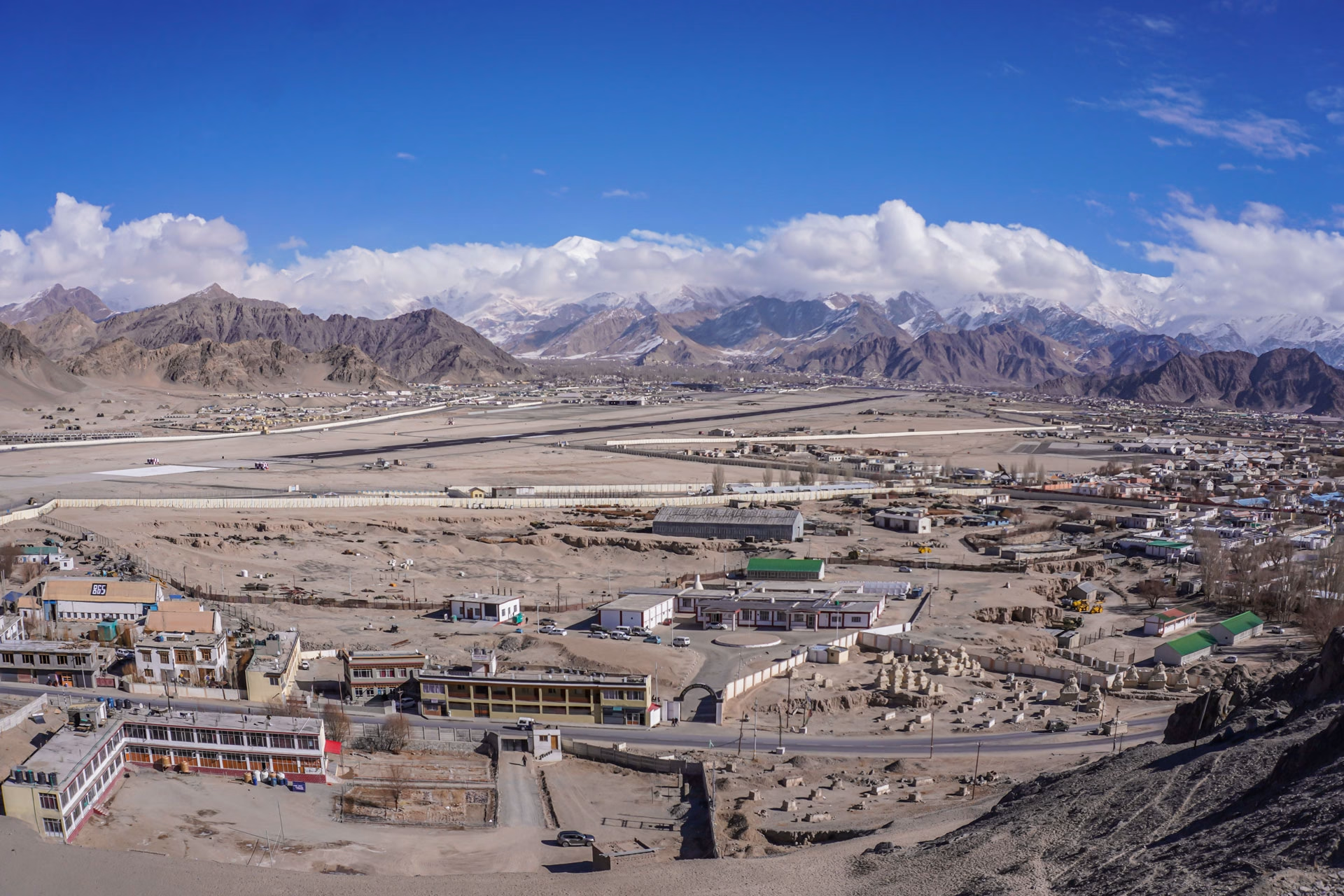
Altitude: 3500 m
You will be picked up in a cab from the airport and then check into your accommodation in Leh. After freshening up at the hotel, you can rest and spend the day acclimatising to the high altitude to prepare for the days ahead.
Meals: Dinner
Night: Stay at the hotel in Leh
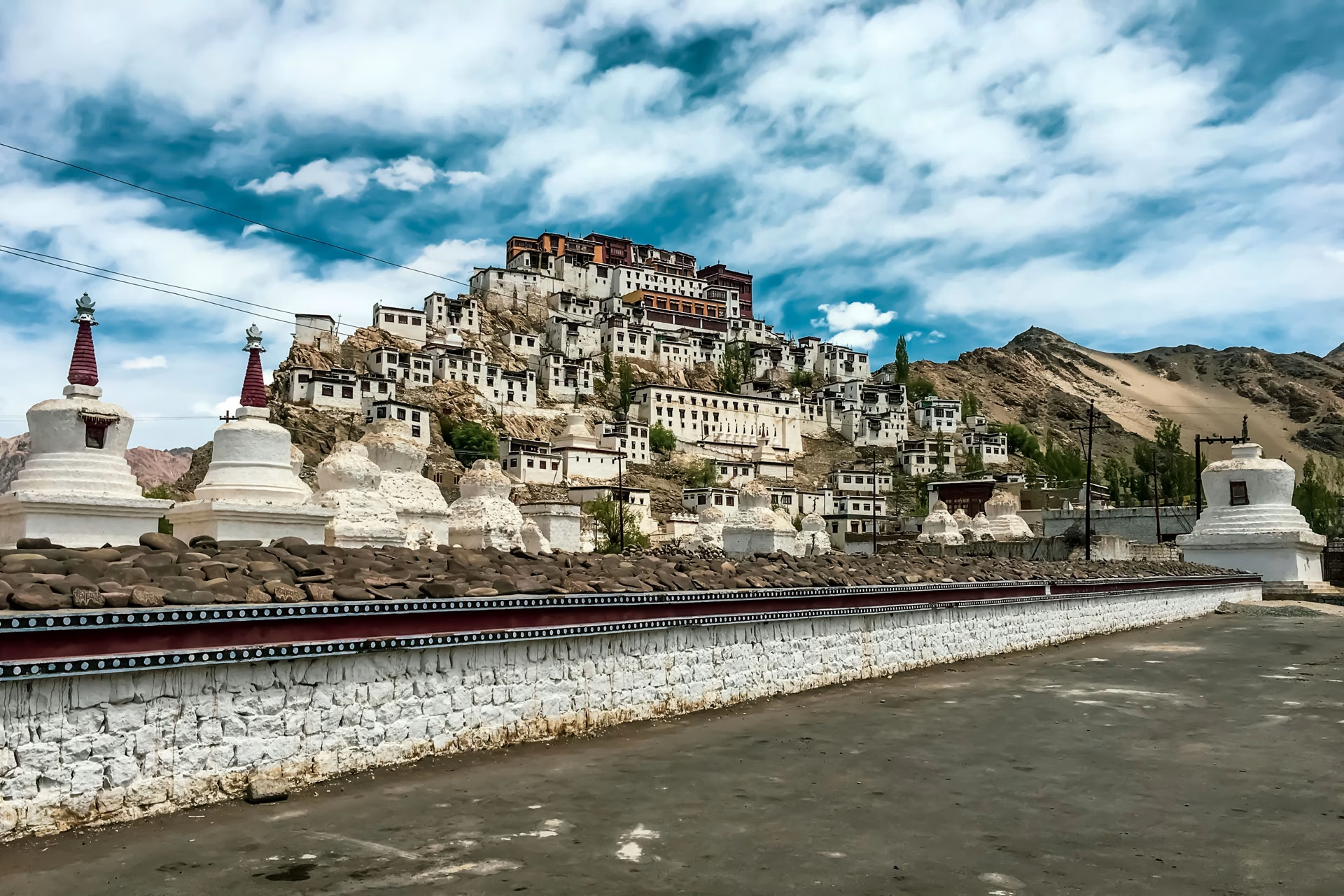
Dist: 210 km | Altitude: 4088 m to 2757 m
After breakfast, you will move towards Kargil, and en route, you will visit the Leh Palace, Shanti Stupa, Hall of Fame, Spituk monastery, Gurudwara, Magnetic Hill, Sangam, and Rafting Point. In the evening, you will arrive at your accommodation in Kargil for check-in.
Meals: Breakfast, Dinner
Night: Stay at the hotel in Kargil
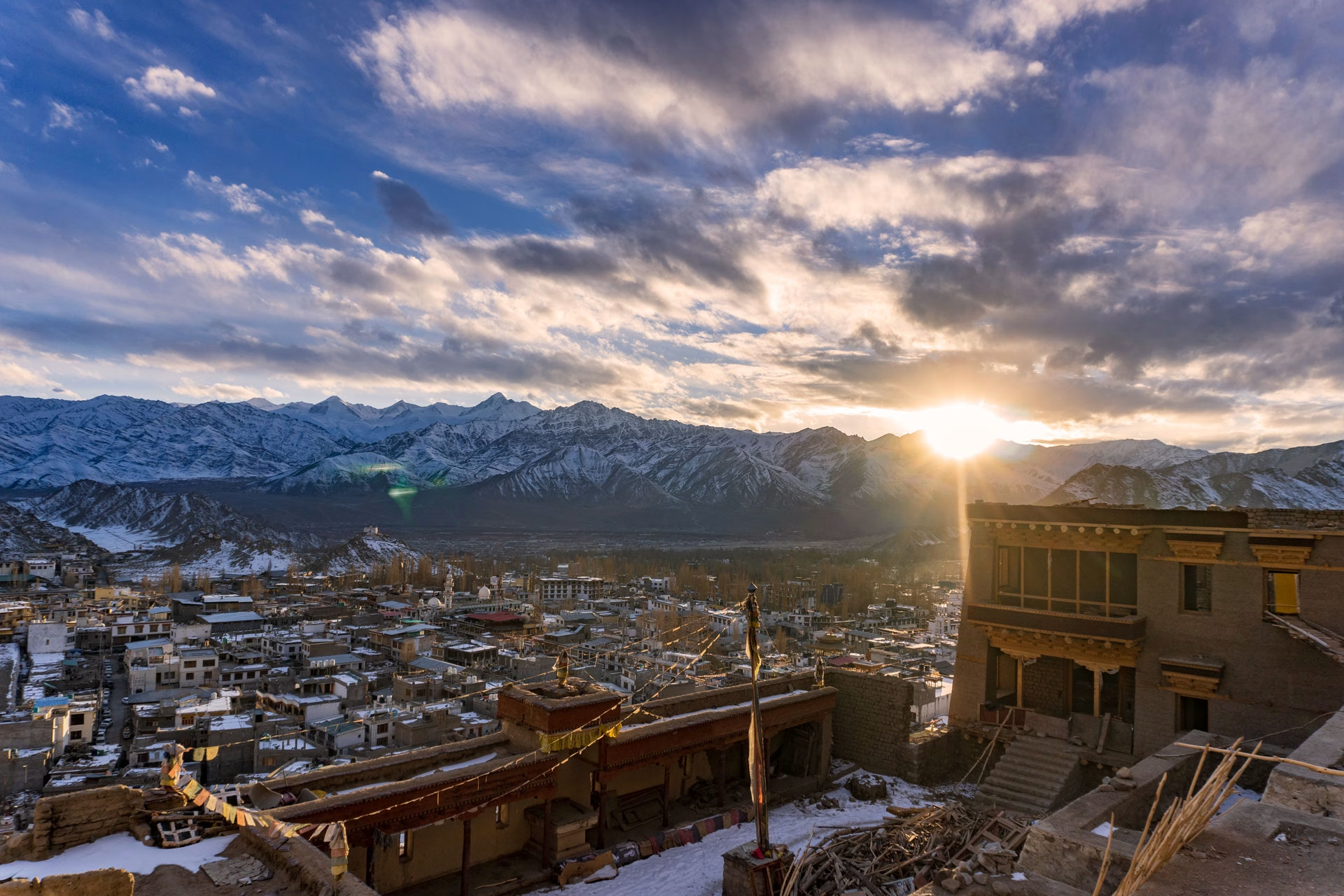
Dist: 210 km | Altitude: 2757 m to 4088 m
After breakfast, you will begin your drive back to Leh, enjoying the scenic landscapes, mountain views, and charming villages along the way. Upon arrival, you will check into your hotel and have time to rest after the journey.
Meals: Breakfast, Dinner
Night: Stay at the hotel in Leh
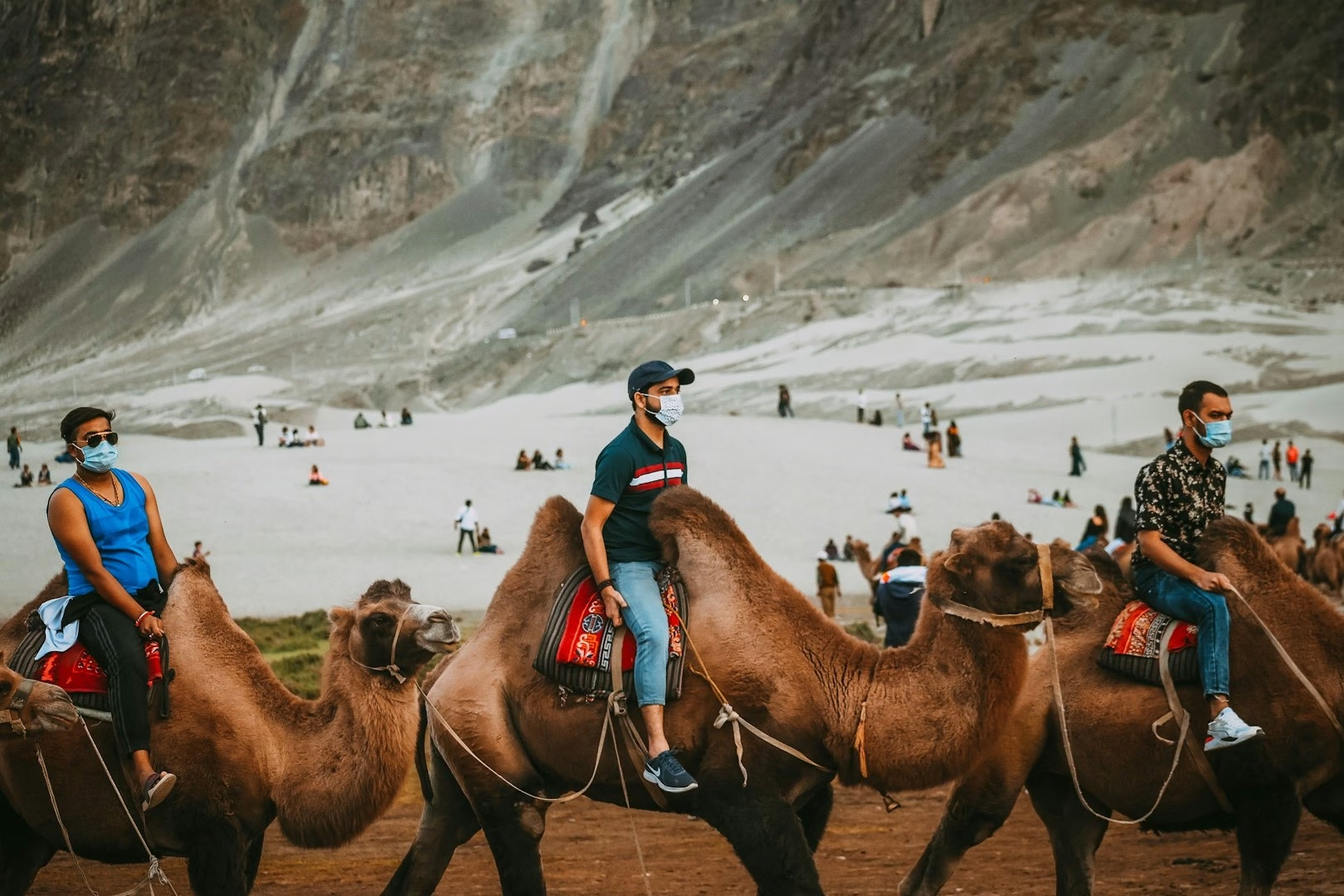
Dist: 160 km | Altitude: 3500 m to 5354 m to 3048 m
After breakfast, you will travel to Nubra Valley via the Former Highest Motorable Pass, Khardung La. You will also visit Diskit Monastery, Hunder Village, Sandunes, and Camel Ride Point. After exploring these locations, you will check into your hotel.
Meals: Breakfast, Dinner
Night: Stay at a hotel/homestay in Hunder Nubra Valley
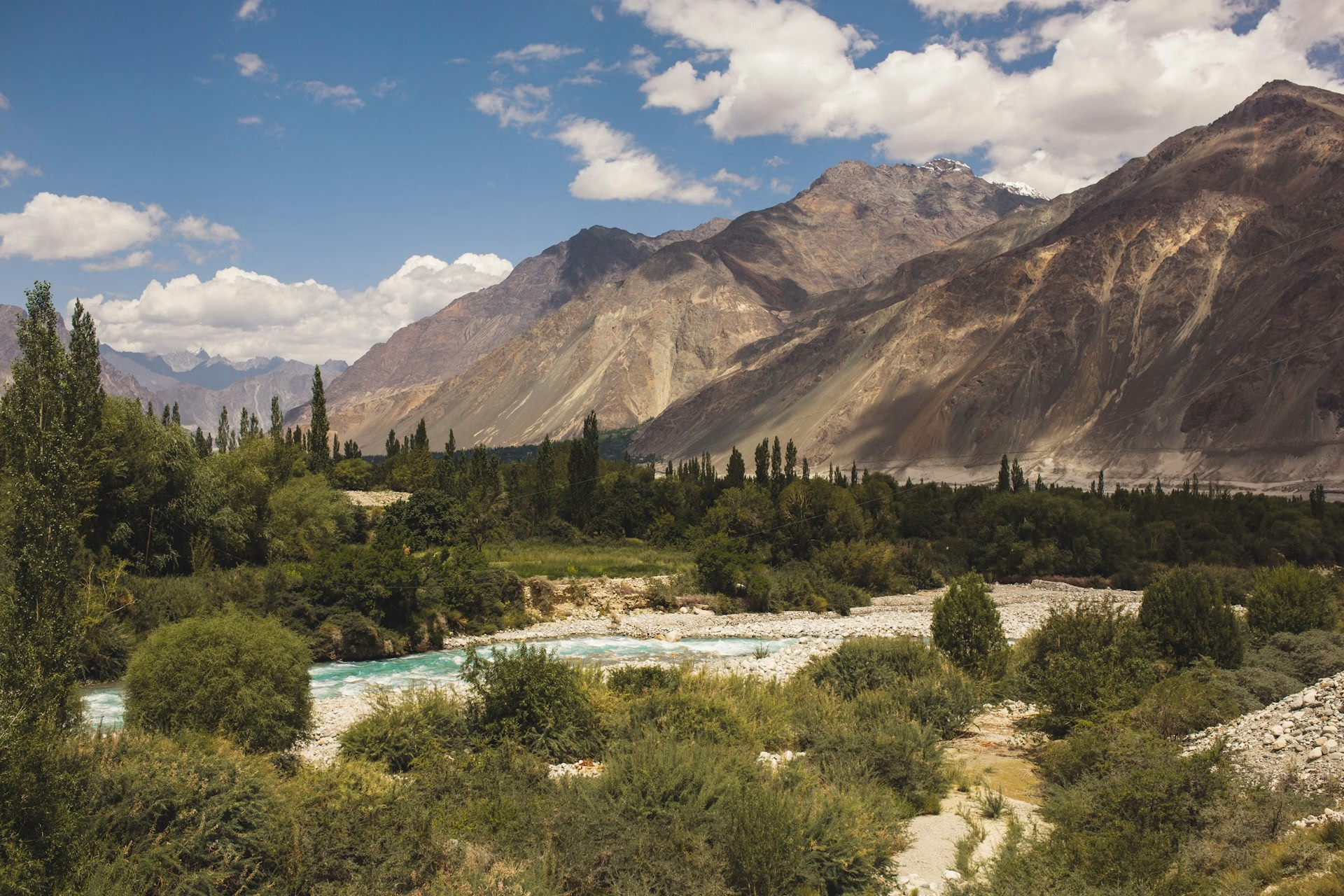
Dist: 160 km (to and fro) | Altitude: 3048 m to 3001 m
Today, you will visit the last northmost village in India, Turtuk Gompa, where you can enjoy the beautiful place surrounded by apricot orchards. You also have a chance to get the blessing of the almighty at Turtuk Gompa. The lovely local culture of Turtuk village offers you the opportunity to explore more of the latest towns of India.
Meals: Breakfast, Dinner
Night: Stay at a homestay in Hunder, Nubra Valley
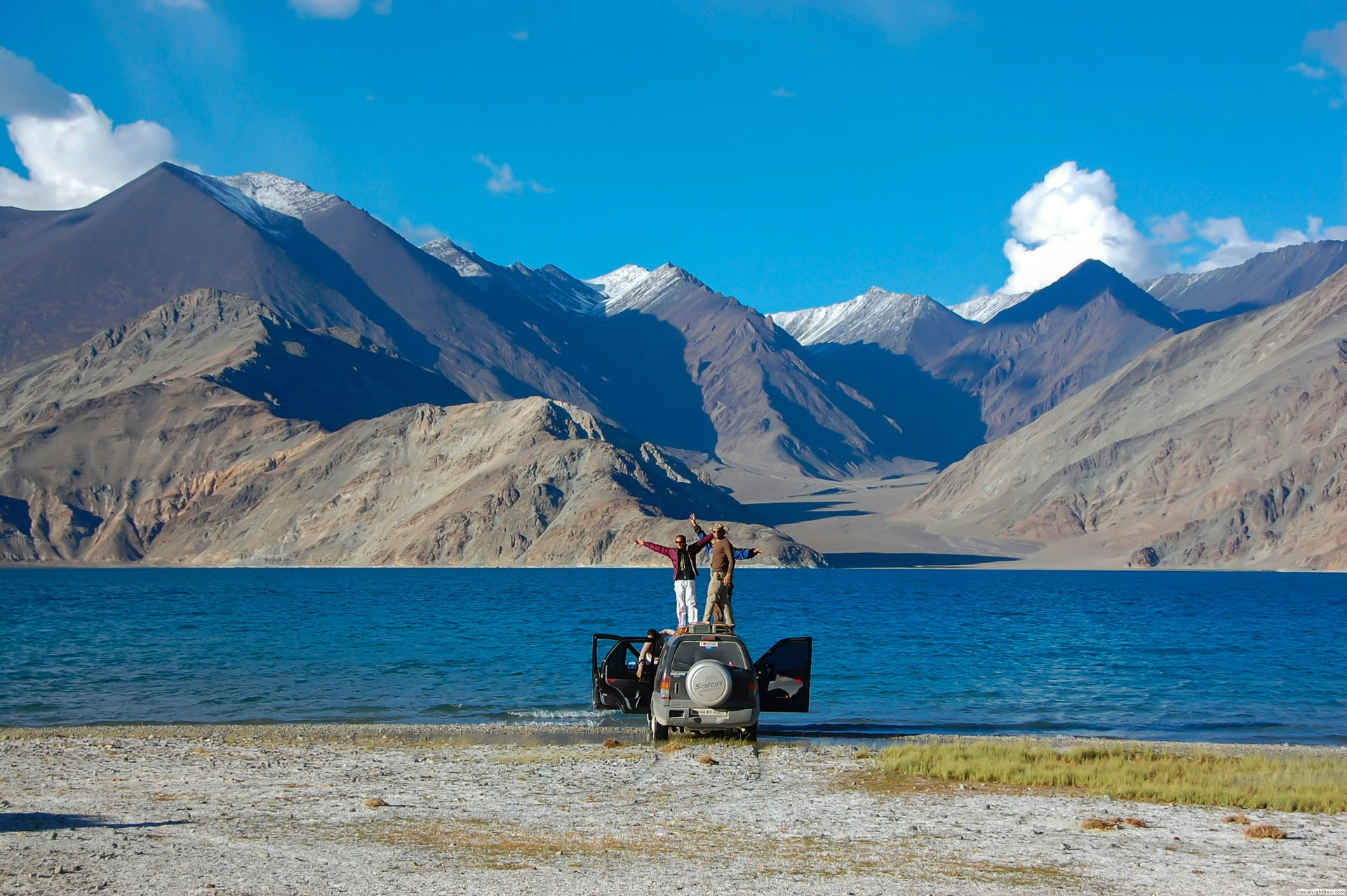
Dist: 200 km | Altitude: 3001 m to 4814 m
After waking up to a stunning view of Nubra Valley, you will drive to Pangong Tso, a high-altitude saltwater lake. On the way, you will pass through the scenic villages of Shayok, Durbuk, and Tangsay. In the night, you will stay near Pangong.
Meals: Breakfast, Dinner
Night: Stay at Homestay in Tangtse
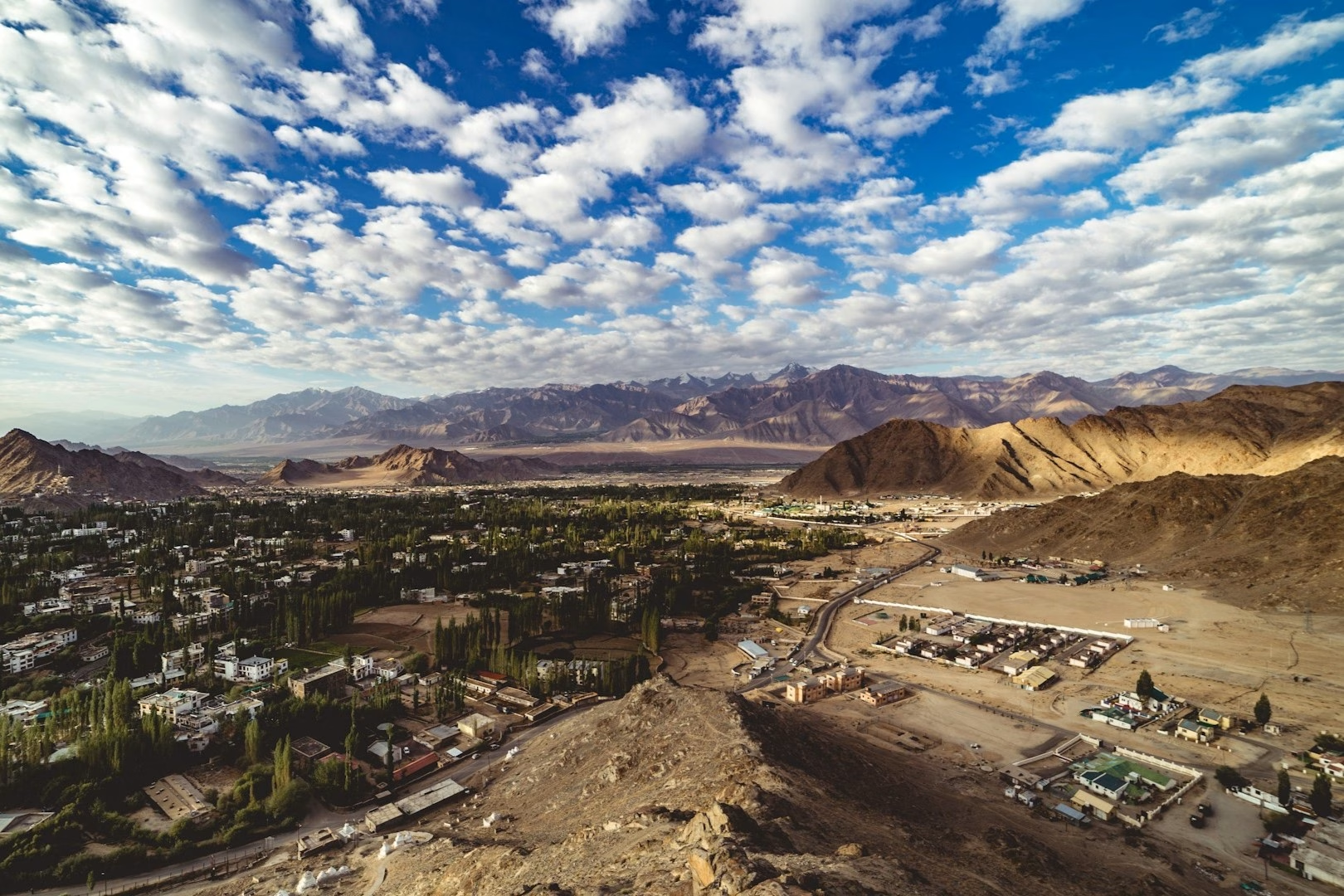
Dist: 309 km | Altitude: 4814 m to 5798 m
After breakfast, you will drive to Hanle through the scenic Tsaga La Pass, enjoying the rugged mountain landscapes along the way. Later in the evening, you will arrive and check into your accommodation in Hanle.
Meals: Breakfast, Dinner
Night: Stay at the homestay/Hotel in Hanle
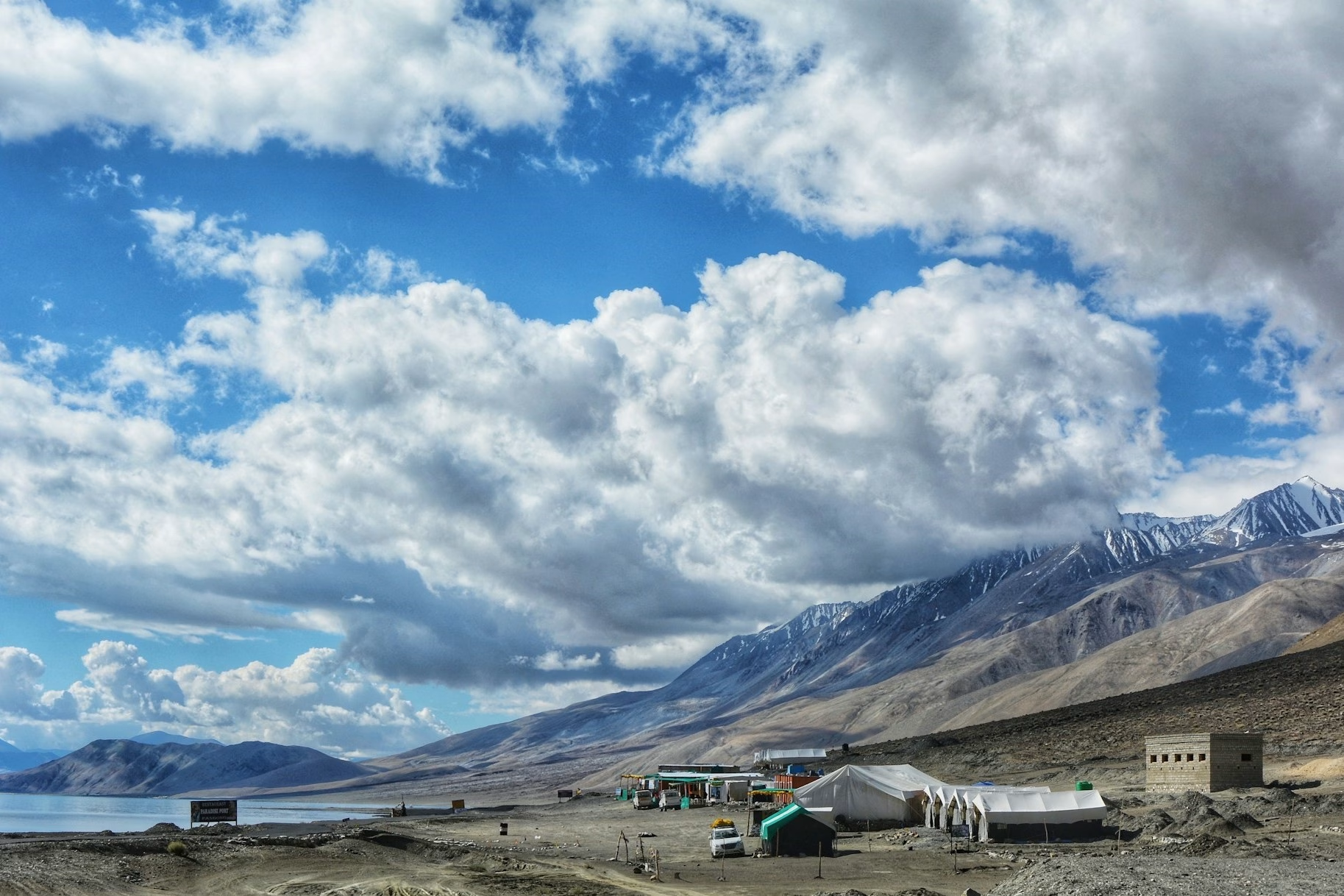
Dist: 170 km | Altitude: 4814 m to 4522 m
After breakfast, you will drive from Hanle to Tso Moriri, passing through the scenic Tsaga La Pass, Nyoma Village, and Mahe Bridge, all set against the stunning backdrop of the high-altitude landscapes. Later in the evening, you will arrive at Tso Moriri and check into your accommodation to spend the night.
Meals: Breakfast, Dinner
Night: Stay at a homestay in Tso Moriri

Dist: 233 km | Altitude: 4522 m to 3500 m
Today, wake up to a beautiful morning in the Tso Moriri; along the way, you will visit Tso Kar Lake, Puga Hot Spring, Puga Village, Tanglangla Pass, Thiksey Monastery, Rancho School, and Shey Palace. In the evening, you will check into the hotel at Leh.
Meals: Breakfast, Dinner
Night: Stay in the hotel at Leh
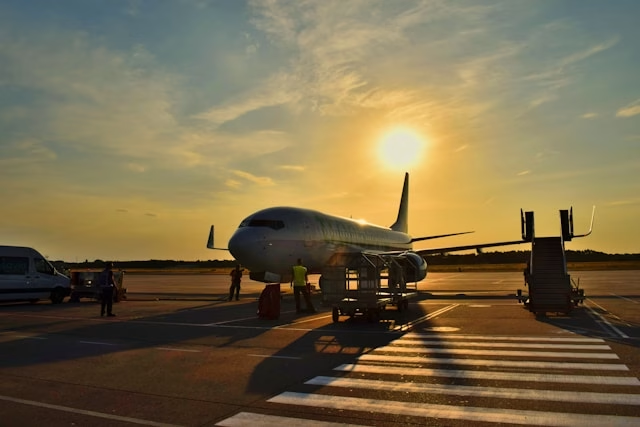
Checkout: 10:00 am
After breakfast, you will check out of the hotel and proceed to Leh Airport. As you journey back, take a moment to soak in the breathtaking landscapes one last time. The tour ends with sweet memories of Leh and the unforgettable experiences you’ve had exploring the beauty of Ladakh.
Meals: Breakfast
Night: Nil
Location | Places to visit |
Leh | Hall of the fame War memorial, Shey Monastery, Thiksey Monastery, Shanti Stupa, Leh Palace, Leh Market, Gurudwara Patthar Sahib, Magnetic Hill, Rafting Point. |
Kargil | Spituk Monastery, Gurudwara, Magnetic Hill, Sangam, Rafting Point (summers) |
Nubra | Khardung La, Diskit Village, Diskit Monastery, Sand Dunes, Camel Ride Point, Hunder, Shyok River. |
Pangong Tso | Shayok, Durbuk, Tangsay Village, Pangong Lake, Chang la Pass. |
Hanley | Tsaka LA, Hanle Monastery, Hanle Observatory, Hanle Valley, Hanle Lake |
Turtuk | Turtuk Waterfall, Balti Heritage House and Museum, K2 Mountains, Chaqchan Mosque. |
Tso Moriri | TsoKar Lake, Puga Hot Spring, Puga Village, Tanglangla Pass |
Note:
Leh
Semi Deluxe | Borgo Villa, Jeevanam Villa |
Deluxe | Nature’s Land, Hotel Lalingkha, Hotel Bluestone, Mahey Retreat, Maple Ladakh |
Super Deluxe | Himalayan Retreat Karzoo, Hotel Spa, Charu Palace, The Kaal |
Nubra
Semi Deluxe | Nubra Boutique Camp, Royal Mount, Pika Camp, Weeping Willow Camp |
Deluxe | Paramount Camp, Ladakh Elysium Camp, Urth Home Boutique |
Super Deluxe | Paramount Super Deluxe, Urth Home Boutique |
Pangong
Semi Deluxe | White Heaven Cottage, Mystic Mountain Cottage, Native Retreat Cottage |
Deluxe | Zamta View Point, Native Retreat Cottage, Star Sherathon Cottage |
Super Deluxe | Snowpine Wooden Cottage, Gongma Residency, Polarise Cottage |
Hanle
Semi Deluxe | Padma Homestay, Ama Cottage |
Deluxe | Padma Homestay, Umlingla Residency |
Super Deluxe | Umlingla Residency, Royal Rebo |
Tso Moriri
Semi Deluxe | Tsomoriri Guest House, Tsomoriri Inn |
Deluxe | Tsomoriri Guest House, Tsomoriri Inn, Tsomoriri Guest House, Dorjay Khangsar, Yumchen Cottage |
Super Deluxe | Grand Dolphine, Wisdom House |
Kargil
Semi Deluxe | Jan Palace, Hotel Jazeera Hangout, Hotel Greenland |
Deluxe | Hotel Rangyul, Hotel Siachen |
Super Deluxe | Royal Gasho, Zojila Residency |
We understand that plans can change, but the booking amount is non-refundable due to the costs we incur in preparing for your tour or activity. If you wish to reschedule for a different date, we'll adjust it to the same package, providing you with the necessary flexibility.
If you have paid the total amount but cancelled the package. You will be provided with a refund, as mentioned below:
Tours or activities may be cancelled due to unforeseen events beyond our control, weather conditions such as heavy rain or storms, or government restrictions like sudden closures of specific areas. In such a scenario, we will provide an alternate tour or activity. However, no refunds will be provided.
Ladakh, historically a part of Greater Ladakh, once extended from Kailash Mansarovar to Dardistan. This region was influenced by both Tibet and China, with references in Arab, Chinese, and Mongolian histories. In the 7th century, fierce wars between Tibet and China were fought in Baltistan, a part of Greater Ladakh, and in the 8th century, Arabs joined the conflict. Ladakh was later conquered by the Kashmiri ruler Lalitaditya. By the 9th century, Arabs had taken control of Central Asia, creating a buffer state between Tibet and China, leading to the fragmentation of Greater Ladakh. Around 3000 years ago, migrations from surrounding regions like Tibet, Turkistan, and Himachal Pradesh brought settlers to Ladakh, which the Dards and Indo-Aryans originally inhabited. Tibetan immigration overpowered the local Dard culture; today, much of Ladakh’s population is of Tibetan origin. Buddhism reached Tibet from India via Ladakh, which was once a Buddhist stronghold. However, in the 16th century, peaceful Islamic missionaries successfully converted many in the Drass, Kargil, and Suru valleys, with the first Muslim preacher, Mir Syed Ali Hamdani, arriving in Ladakh 660 years earlier. He introduced Islam and built a mosque at Shey, the then capital of Ladakh. In the 10th century, Ladakh was ruled by Raja Skitde Nemagon, who unified the fragmented region. Under the famous Ladakhi ruler Sengge Namgyal in the 17th century, the kingdom reached its zenith, extending into Western Tibet and Spiti. Ladakh, strategically located on ancient trade routes, flourished as a centre of commerce, especially for goods like Pashmina wool, which was transported to Srinagar to create the famous shawls. Its lucrative trade attracted Gulab Singh of Jammu, who invaded Ladakh in 1834, incorporating it into Jammu and Kashmir. Post-partition, parts of Ladakh were illegally occupied by Pakistan and China, with Pakistan ceding 5,180 sq. km to China. In 1979, Ladakh was divided into Leh and Kargil districts, with Leh being predominantly Buddhist. Leh is known for its unique culture, influenced by four Buddhist sects—Nyingma, Drukpa, Kargyu, and Sakya (Red Sect), and the Gelugpa or Yellow Sect. Despite modernisation, the older generation still reflects the traditional simplicity and peace-loving nature of Ladakhi society, which is also evident in their art and craft.
Species Found in Ladakh
Ladakh is home to a diverse range of wild animals, including some rare species that inhabit the region’s most remote areas. The fauna is unique and precious, featuring animals like the Kiang, Yak, Ibex, Markhor, Lynx, Snow Leopard, and more. The tablelands of Indus and Rupshu are rich with wild horses, hares, and marmots, while the rugged valleys provide a natural habitat for deer, antelope, wild sheep, and goats. Below is a brief description of various game and wild animals found in Ladakh:
Nyan (Ovis Ammon Hodgsoni):
Ovis ammon, known as Nyan or Hodgson’s sheep, is Ladakh’s largest sheep species. Nyan males are more significant than females (Nyanna) and can weigh up to 127 kg. They inhabit regions like Chang Chenmo, Rupshu, and Karakoram at altitudes of 4200 to 4800 meters. Indiscriminate hunting has significantly reduced their population.
Shapo (Ovis Vignei):Also known as Urial, this wild sheep with twisted horns is typically found in lower altitudes, such as the Indus and Shyok valleys, Spituk, Khaltse, and Fatula.
Bharal (Ovis Nabura):
Bharal, or blue sheep, is a well-built sheep with large horns found in steep terrains during summer at altitudes of up to 5500 meters. In winter, they move to lower elevations. They are found in Nubra, Zanskar, Rupshu, and Khaltse.
Marco Polo’s Sheep (Ovis Poli):
First noted by Marco Polo in the 13th century, this species is found on high plateaus such as Karakoram and Desang. It has long horns and is similar in size and weight to Ovis ammon.
Ibex (Capra Sibirica):
The ibex is a wild goat species with long, sweeping horns and a fine fleece under its stiff coat. Found in Ladakh, the ibex is known for its handsome appearance but has been heavily hunted for its warm fleece.
Markhor (Capra Falconeri):
Known as Rapho-chhe or the “King Wild Goat” in Ladakh, the Markhor has long, spiral horns and weighs up to 100 kg. Its Persian name, Markhor, meaning “snake eater,” originates from the belief that it consumes snakes. This species is highly prized for its medicinal properties and is found in parts of Ladakh.
Goa (Gazella Picticaudata):
The Goa, a graceful wild deer with ringed horns and a sandy grey colour, is now rare. Only about 150 remain in Ladakh. They are mainly found in the plains of Rupshu and Chang Chenmo.
Chiru (Pantholops Hodgsoni):
The Tibetan antelope, or Chiru, is prized for its soft under fleece, known as Shahtoosh, used to make Kashmiri shawls. Due to hunting, this species has faced near extinction. It is found in Chang-Chenmo, Aksai-Chin, and Shyok Valley.
Hare (Gonus Lepus):
The Ladakhi hare, also known as Khargosh, has soft, woolly fur with a blush colour and is found in Rupshu, Chang-Chenmo, and around Pangong Lake.
Wild Yak (Bos Grunniens):
The wild yak, known locally as Dong, is a giant beast used as a pack animal in Ladakh. It is found mainly in Chang Chenmo and Aksai-Chin. The yak weighs up to 225 kg and has long black hair. Domesticated yaks are used for burden and crossbreeding with cows.
Kiang (Equus Hemionus Kiang):
The Kiang is a brown and white-coated wild animal resembling a mule. It is known for its speed and loud braying and inhabits the Rupshu, Changthang, and Chang Chenmo areas.
Marmot (Arctomys Himalayanus):
The marmot resembles a giant squirrel with golden or reddish fur and is commonly found in Baltistan, Zojila, Drass, Rupshu, and Khardong La. Marmots hibernate during the long winter months in caves.
Snow Leopard (Felis Uncia):
The snow leopard, also known as Shun or Safad Cheetah, is the apex predator of the Ladakh region. Found near the snow line, this elusive cat has a thick, woolly coat and is highly feared by locals.
Lynx (Felis Lynca Isabellinus):
Known locally as Ee or Ech, the lynx is a nocturnal predator in Rupshu and Zanskar. It preys on game animals like ibex, birds, and domestic animals.
Shanko (Canis Lupus):
The Ladakhi wolf, known as Shanko, is a nocturnal predator in Rupshu. It preys on flocks and game animals.
Wild Dog:
A ferocious predator inhabiting high-altitude regions, the wild dog preys on nomads’ flocks and game animals.
Fox (Vulpes Vulpes):
Foxes are shared across the region, varying in colour from yellow to dark grey.
Climate of Ladakh
Rainfall and Vegetation
Agriculture
Kargil
District Kargil, located 205 km from Srinagar, covers 14,036 sq. km at altitudes between 8,400 to 12,000 feet. It includes 17 CD blocks, 7 tehsils, and 4 sub-divisions with 129 villages, 26 of which are in Zanskar. The Kargil Development Authority (established in 2006) focuses on enhancing tourism infrastructure, including adventure activities like river rafting and trekking and cultural and pilgrimage tourism. Although Kargil has great tourism potential, its growth has slowed than Leh due to militancy since 1989 and a lack of private sector involvement. Efforts are underway to develop monuments, parks, picnic spots, and budget accommodations, with new areas like Aryan Valley and Shakar Chiktan opening up for tourists.
Kargil, historically named Purik, is a region home to diverse ethnic groups, including Brogpas, Baltis, and Ladakhis, who speak languages such as Shina, Balti, and Ladakhi. The Kargil Development Authority, established in 2005, focuses on transforming Kargil into a heritage town while preserving its unique character and architecture. The Authority aims to boost tourism as a key economic driver by enhancing infrastructure, promoting eco, adventure, and heritage tourism, and increasing private sector participation. With goals set until 2050, the Authority envisions Kargil as a vibrant hub of international tourism, fostering employment and sustainable development while protecting the environment and cultural heritage.
Best Time To Visit Leh Kargil
| Month | Weather | Activities & Highlights | Overall Recommendation |
| January | Extremely Cold (-20°C to -5°C) | Snow, Chadar Trek, Frozen Pangong & Tso Moriri Lakes, Ice Stupas | For adventure enthusiasts |
| February | Extremely Cold (-15°C to -5°C) | Snow treks, Chadar Trek, Winter festivals | For winter lovers |
| March | Cold (-10°C to 5°C) | Melting snow, fewer tourists, transition to spring | Quiet and scenic |
| April | Cool (0°C to 10°C) | Snow-capped peaks, Leh slowly opens, monasteries, Hemis Festival preps | Start of tourist season |
| May | Pleasant (5°C to 15°C) | Road to Leh and Kargil opens, festivals, ideal for sightseeing | The ideal time to visit |
| June | Pleasant (10°C to 20°C) | Best time for road trips, open passes, trekking, adventure activities | Peak tourist season |
| July | Warm (15°C to 25°C) | Monasteries, Pangong Lake, road trips, cultural festivals | Best for culture & scenery |
| August | Warm (15°C to 25°C) | Nubra Valley, trekking, camping, cultural tours | Ideal for trekkers |
| September | Cool (10°C to 20°C) | Clear skies, post-monsoon beauty, Ladakh Festival, fewer tourists | Best for photography |
| October | Cold (0°C to 10°C) | Scenic landscapes, start of snowfall, passes begin to close | For peaceful trips |
| November | Very Cold (-10°C to 5°C) | Snowfall, fewer tourists, monasteries remain open | Early winter experiences |
| December | Extremely Cold (-15°C to -5°C) | Snow, frozen lakes, winter treks, remote villages in deep winter mode | For extreme adventure |
Best Months: May to September for pleasant weather and outdoor activities.
Winter Adventures: December to February for snow-related activities like the Chadar trek.
The Khardung La Pass, standing at an elevation of 18,380 feet, acts as the entry point from Leh to Nubra Valley. Renowned for its challenging steep gradients and winding turns, this pass provides an exciting driving experience for thrill-seekers.
The Fotu La Pass is one of two high mountain passes between Leh and Kargil, with Namika La being the other. As you travel eastwards, the highway descends towards Lamayuru after crossing Fotu La.
Indian citizens must obtain an ILP (Inner Line Permit) to travel within Ladakh. This permit can be acquired online or directly from Leh's Deputy Commissioner's Office. Tour operators like Uncia Trails can facilitate the process, simplifying your travel arrangements.
Nubra Valley averages about 10,000 feet above sea level, while Leh is at a higher altitude of approximately 11,500 feet. The climate in Nubra is milder, with more fertile soil and thicker vegetation than other areas of Ladakh.
The distance from Leh to Kargil is approximately 215.6 km, and the journey takes about 4 hours and 16 minutes via NH 1.
Khardung La Pass, located 40 km from Leh, is famously known as the gateway to the Nubra and Shyok valleys in Ladakh, Jammu, and Kashmir. At an altitude of 5,359 meters, it is the highest pass in India that can be traversed by vehicle.
The hill station of Drass is often called "The Gateway to Ladakh." It is situated in Kargil, India, along NH-1, between Zoji La Pass and Kargil.
The Suru River, a tributary of the Indus River, flows predominantly through the Kargil district of Ladakh, India, into Gilgit-Baltistan in Pakistan.
The cheapest months to visit Leh are typically November and early December, as accommodation and travel costs are lower due to fewer tourists. However, be prepared for cold weather during this time.
The off-season in Leh Ladakh is from November to March, July, and August. During these months, the region experiences harsh weather, extreme cold temperatures, and the risk of road closures due to snowfall.
| # | Discount group | From adult | To adult | Value |
|---|---|---|---|---|
| 1 | Discount (3 to 4 person) | 3 | 4 | 5% |
| 2 | Discount (5 to 6 person) | 5 | 6 | 15% |
| 3 | Discount (7 to 8 person) | 7 | 8 | 20% |
| 4 | Discount (8 to 9 person) | 8 | 9 | 25% |
| 5 | Discount (9 to 10 person) | 9 | 10 | 30% |
| 6 | Discount (More than 10) | 11 | 50 | 35% |
Leave a review